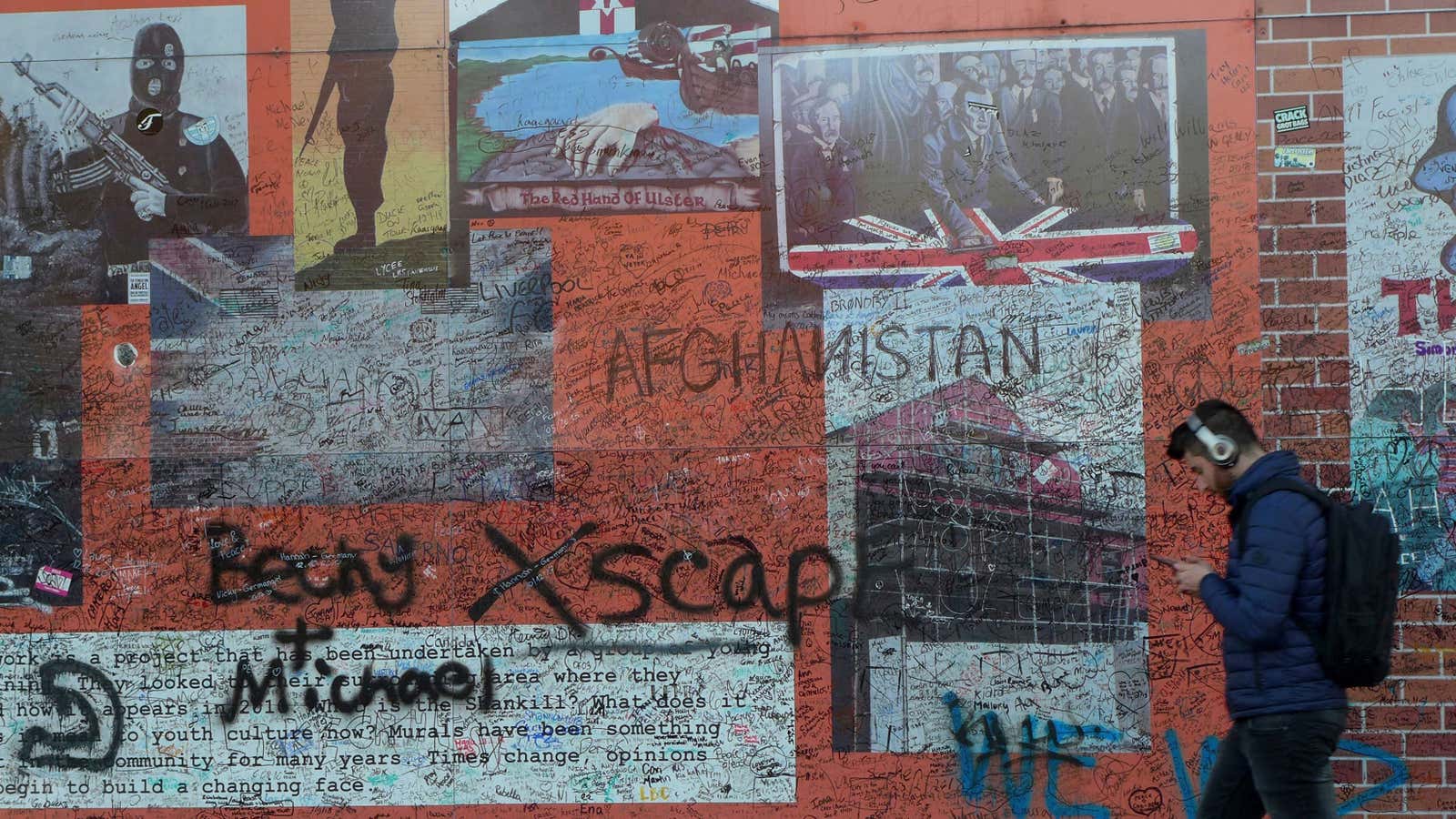Theresa May, the UK’s prime minister, was supposed to be meeting with European Union leaders in Brussels today to finalize the terms of Brexit—the UK’s exit from the EU. Her foreign counterparts pulled out (paywall) of a planned meeting next month, but May’s greatest hurdle isn’t bargaining with the EU. She still has an enormous obstacle at home—gaining enough support to pass any deal in Parliament.
Members of Parliament are divided on how Brexit should proceed. Even within May’s own Conservative party there are opposing camps. She lost her majority government in last year’s election. She’s now forced to frequently rely on the support of 10 MPs from the Democratic Unionist Party. With a minority government and a fractious party, it will be difficult for her to get the votes needed to approve any proposal.
Much of the current disagreement involves the border between Northern Ireland, which is part of the UK, and the Republic of Ireland, which is not. There are no customs or immigration checks at the border between the two nations since both are members of the EU’s free-trade area known as the “customs union.” All parties want to avoid installing border controls and checkpoints. Few can agree how to do that once the UK leaves the EU.
Businesses operating in Northern Ireland can easily serve clients and customers in the Republic of Ireland because both are part of the EU’s common regulatory area known as the “single market.”
In a tangle of sticking points and deal-breakers, here are some potential paths forward—and why each is likely to fail.
